With the recent release of Iron Maiden Pinball Machine from STERN Pinball and their new pinball designer (and a 9 time major pinball championship winner) Keith Elwin, we asked ourselves: 'Who is the greatest pinball designer of all time?
Much like pool tables, every single pinball machine is different. Even if you’ve never played on pinball machines before, you’ll be able to tell looking across a wide range of games that every play field you come across is completely unique. Some games are lightning quick tests of accuracy and reflexes, whilst others are fun and refreshing games of an enjoyable challenge.
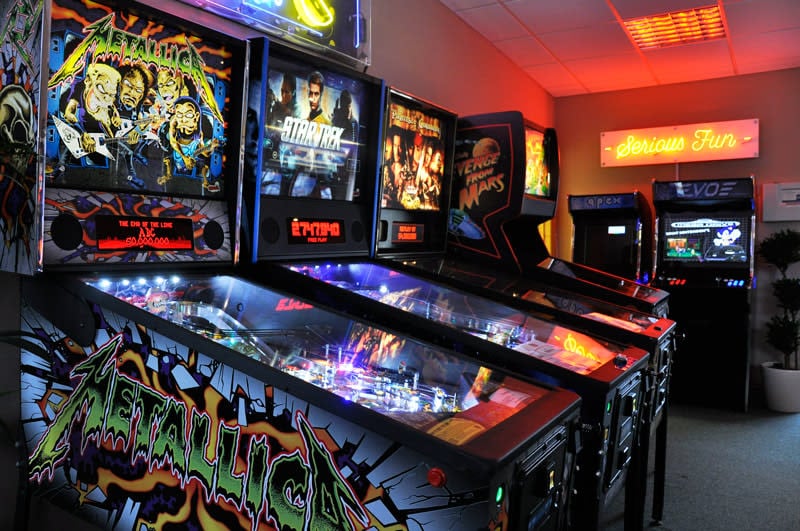
Behind every single pinball play field is a designer, and many of these designers have become famous names in the pinball community.
Pinball really took off with the introduction of electronic solid state technology in the 70s, and this incredibly rich and diverse part of pinball's history leads onto one very hot debate: Who was the greatest solid state pinball designer of them all?
There are so many ways in which to approach this question, it left the entire team scratching its heads as to how to best approach it. How do you measure ‘greatness’? A total number of games sold? Best overall rated? Something else? It was a monumental challenge to find just who the best solid state designer of all time was.
This article uses facts and figures derived from both Pinside (which offers users a comprehensive top 100 pinball machines list as rated by pinball players the world over) and the Internet Pinball Database (which offers detailed insights into some behind the scenes details such how many games were produced etc).
Speak to any pinball player, and they’ll tell you they all have their own favourite designers: Steve Ritchie, John Borg, George Gomez and Pat Lawlor just to name just a few. Every one of these designers games feels very different, so let’s have a look at just some of the big names we’ll be seeing here:
Steve Ritchie
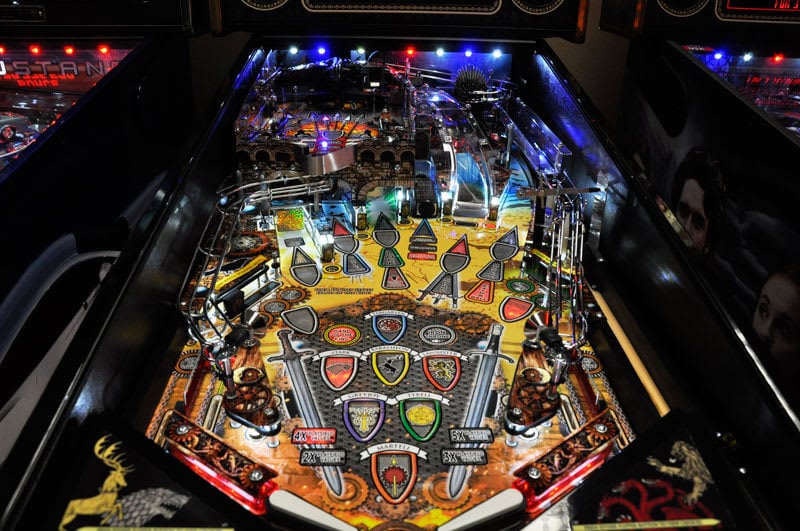
Primary Decades Active: 1970s - present
Total number of individual games designed (that made production): 23
Notable Games: Firepower (1980), High Speed (1986), Terminator 2: Judgement Day (1992) Spider Man (2007) Game of Thrones (2015)
Seminar with Steve Ritchie
(balliswild, 2012)
Steve Ritchie is regarded by pinball enthusiasts as the ‘king of flow’, and his games are some of the most fluid and fast in all of pinball. If you step up to a game by Steve Ritchie, you’ll be in for one heck of a ride! Steve Ritchie has other claims to fame in the industry, from lending his voice to numerous games, to even coming up with the name ‘Mortal Kombat’ for the famous fighting game arcade series!
Pat Lawlor
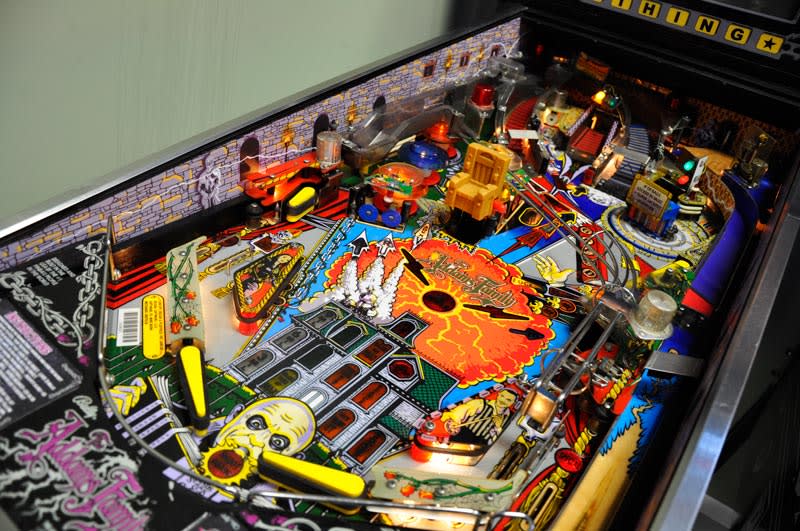
Primary Decades Active: 1980s - present
Total number of individual games designed (that made production): 18
Notable Games: Banzai Run (1988), The Addams Family (1992), The Twilight Zone (1993), Ripley’s Believe it or Not (2004), Family Guy (2007)
Pat Lawlor News Interview
(CBS2 Chicago, 1990)
Pat Lawlor holds the distinction of creating some of the best selling pinball machines of the 1990s, and players rate his games as some of the most involved and fun the industry has to offer. His most popular game (The Addams Family, 1992) remains the best selling solid state pinball machine of all time, with over 20,000 units shipped!
Brian Eddy
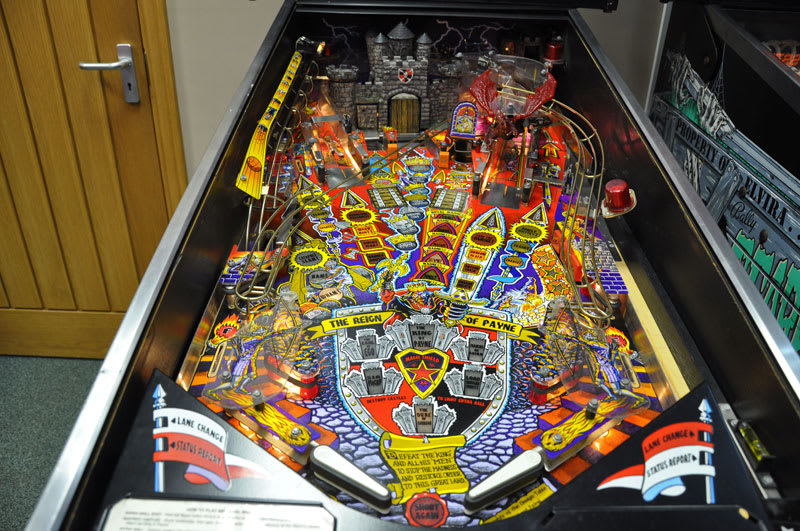
Primary Decades Active: 1990s
Total number of individual games designed (that made production): 3
Notable Games: The Shadow (1994), Attack From Mars (1995), Medieval Madness (1997)
Medieval Madness Promo (with Brian Eddy)
(Williams Electronics, 1997)
When Brian Eddy actually begun his career in the pinball industry, it was actually as a software designer and not a game designer! His play fields are all tense tests of speeds and accuracy, blending great humour with great play field features. Whilst Brian Eddy hasn’t designed as many games as some others, each of his games have proven to be uncontested hits with the more dedicated pinball community, often ranking as some of the best games by pinball players.
John Borg
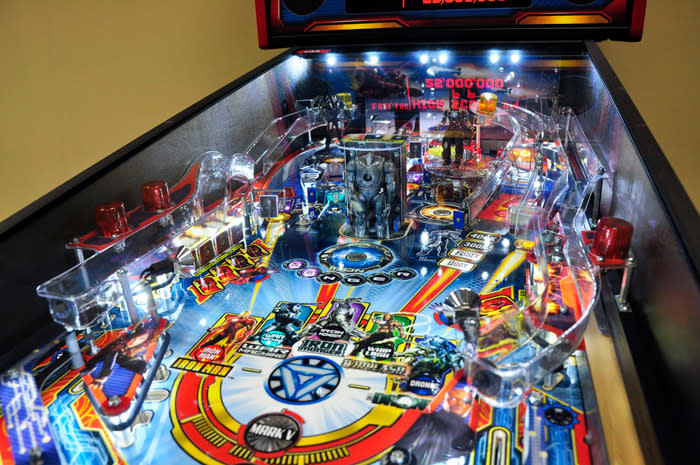
Primary Decades Active: 1990s - present
Total number of individual games designed (that made production): 25
Notable Games: Star Wars (1992), Guns ’N Roses (1993), Metallica (2013) The Walking Dead (2014)
X-Men LE Pinball Promo (with John Borg)
(STERN, 2012)
Having initially begun working for Data East, John Borg produced many of the company’s most popular tables, including the awesome Star Wars and much sought-after ‘Guns ’N Roses’ machine. Nowadays, John Borg is a principle designer at STERN, and continues to treat players with his seemingly simple, but incredibly deep designs and rules.
George Gomez
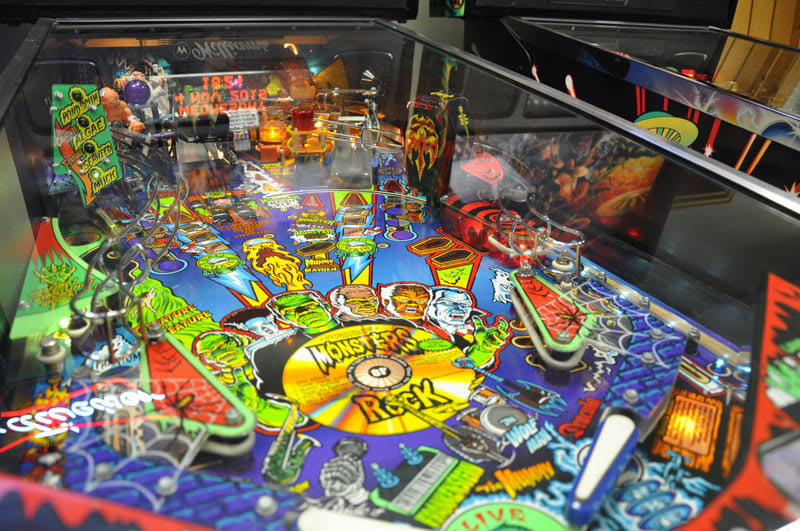
Primary Decades Active: 1990s - present
Total number of individual games designed (that made production): 11
Notable Games: Corvette (1994), Monster Bash (1998), Lord of the Rings (2003), Transformers (2011)
Interview with George Gomez
(904PinballZine, 2014)
George Gomez is renown for creating some of the greatest pinball machines throughout the 1990s, and for producing some of pinball’s greatest games even whilst pinball was declining in popularity. Step up to a game by George Gomez, and you’ll be rewarded with silky smooth ball flow from the moment your ball leaves the plunger, right through to the end-of-game match sequence.
John Popadiuk
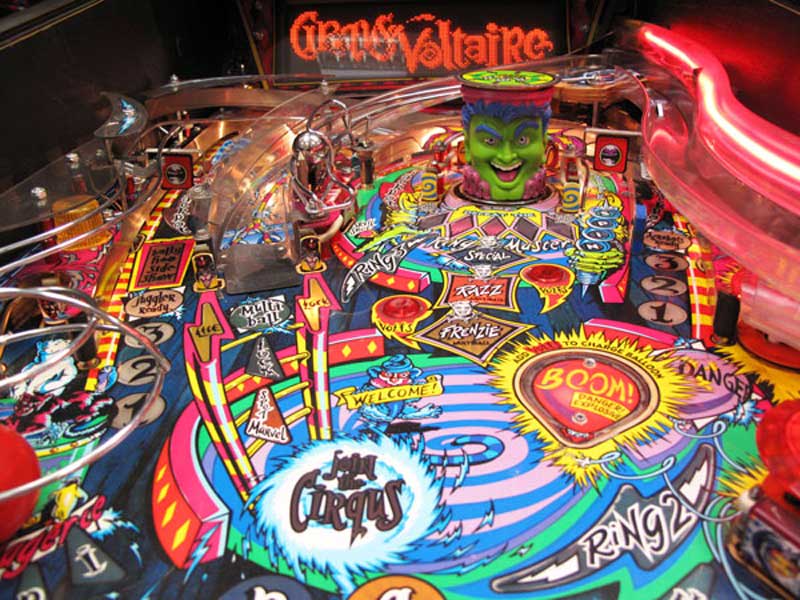
Primary Decades Active: 1990s
Total number of individual games designed (that made production): 5
Notable Games: World Cup Soccer (1994), Theatre of Magic (1995), Tales of the Arabian Nights (1996), Cirqus Voltaire (1997)
Seminar With John Popadiuk
(balliswild, 2012)
John Popadiuk’s games are some of the most instantly recognisable machines in the world today. Popadiuk’s play field designs are always wacky, always colorful and always great fun. Often paired up with spectacular artwork, his games blend show-stopping visual effects and clever technology to wow players new and old alike.
Jim Patla

Primary Decades Active: 1970s-1980s
Total number of individual games designed (that made production): 16
Notable Games: Mata Hari (1978), KISS (1979), Centaur (1981)
Many of Jim Patla’s games are regarded as being some of the best that the early solid state era of pinball had to offer. Patla’s play fields all offered easy to pick up objectives that kept players coming back for more, such as the hectic multi-ball centred gameplay of Centaur.
Barry Oursler
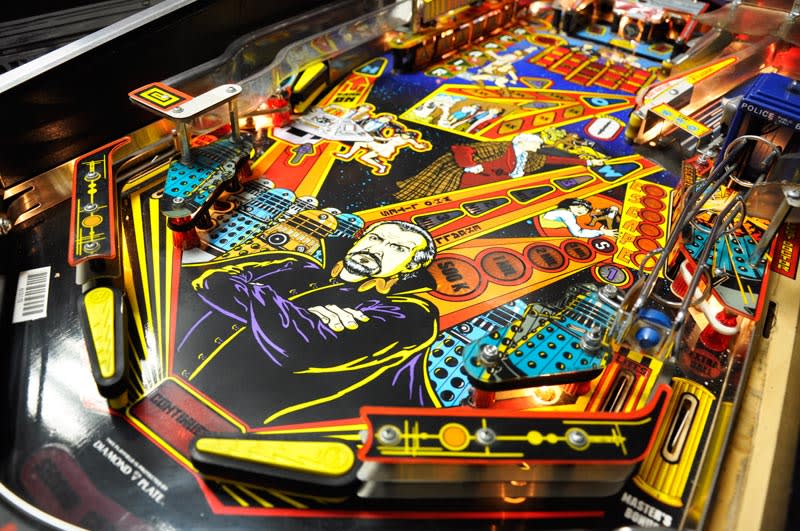
Primary Decades Active: 1970s-1990s
Total number of individual games designed (that made production): 33
Notable Games: Gorgar (1979), PIN*BOT (1986), Cyclone (1988), Bram Stoker’s Dracula (1993), WHO Dunnit (1995)
Barry Oursler has designed an impressive number of games over his long career, beginning way back in the late 70s and then producing games all the way through to the mid-90s. Barry Oursler’s play fields often feature long, sweeping ramp shots that appear to orbit the whole play field (such as on PIN*BOT, Hurricane, Bram Stoker’s Dracula, Doctor Who and even Whodunnit)
By the numbers: Who produced the most best-selling pinball machines?
One way of gauging how prolific a pinball designer is is to look at how many games they were able to sell throughout the years. Following the genesis of Solid State, pinball underwent a noticeable evolution in design. Picking up where the electromechanical pinball machines left off before ultimately developing the in-depth rulesets that pinball machines are known for today
As a result, we decided to group these results by decade. It was interesting to see how the times changed as the game evolved!
1970s

On Total Numbers Sold
| Ranking |
Designer |
Units Sold |
| 1 |
Ed Krynski |
91,522 (11 games) |
| 2 |
Jim Patla |
86,443 (8 games) |
| 3 |
Greg Kmiec |
65,080 (7 games) |
On Average
| Ranking |
Designer |
Average Units Sold |
| 1 |
Jim Patla |
10,805 |
| 2 |
Greg Kmiec |
9297 |
| 3 |
Barry Oursler |
8393 |
| Honourable Mention |
Ed Krynski |
8320 |
Best selling machine of the 70s: Eight Ball (George Christian, 1977: 20,230 units sold)
The 1970s provided players with the earliest solid state pinball machines. The games tended to be a little slower, and the rules for 70s machines a bit more truncated than what we are used to today. You could almost view machines from the 70s (or the ‘Early Solid State’ era) as more technically advanced electromechanical machines.
This isn’t to discredit their fun factor though! There are some simply awesome early solid state games out there, and such games have a firm place in the hearts of pinball aficionados.
Going on the numbers, whilst most pinball machines shipped in the 70s were designed Ed Krynski, Jim Patla ultimately comes out on top when it comes to average number of games sold. This is despite the monumental achievement of George Christian’s ‘Eight Ball’, which sold a staggering 20,230 units: making it the second best selling solid state machine of all time!
It’s also worth mentioning the remarkable achievement of Barry Oursler in this decade: Selling over 8000 games on average despite having only creating four solid state games.
1980s

On Total Numbers Sold
| Ranking |
Designer |
Units Sold |
| 1 |
Barry Oursler |
71,315 (20 games)
|
| 2 |
Steve Ritchie |
67,770 (6 games) |
| 3 |
George Christian |
47,738 (18 games) |
On Average
| Ranking |
Designer |
Average Units Sold |
| 1 |
Steve Ritchie |
11,295
|
| 2 |
Jim Patla |
5112 |
| 3 |
Mark Ritchie |
4985 |
Best selling machine of the 80s: Firepower (Steve Ritchie, 1980: 17,410 units sold)
The 1980s saw a major shift in how pinball machine design was approached. As the slower, purely point driven games began to decline, there was a rise in the number of truly interactive rulesets and stories for players to get involved in. This didn’t stop the best selling machine of the decade (Firepower, 1980) from trouncing the competition when it came to numbers!
It’s immediately clear that Steve Ritchie was beginning to make a name for himself in the pinball world, selling more games than any other designer had on average, beating even Jim Patla’s record set in the 70s! Patla was far from being out of the running though, being the second highest selling designer on average. This was sadly Jim Patla’s final decade of designing games, but the industry was rapidly transitioning into the modern solid state era, that ushered in a whole new breed of pinball designing talent…
1990s
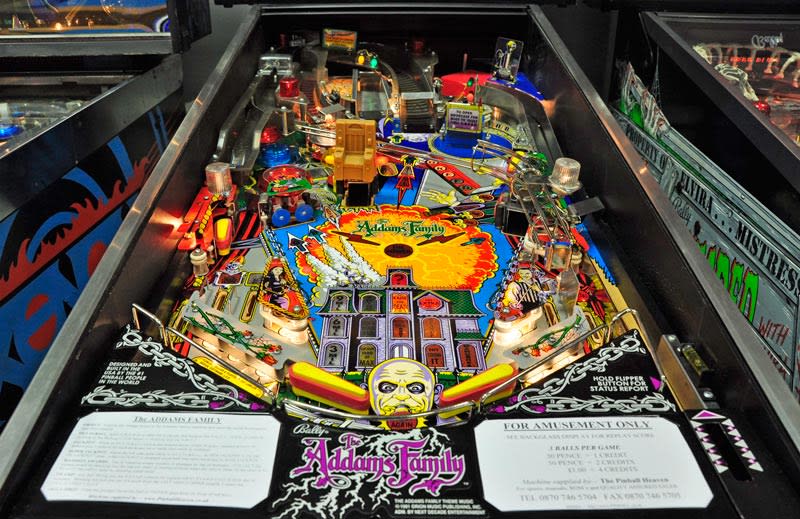
On Total Numbers Sold
| Ranking |
Designer |
Units Sold |
| 1 |
Joe Kaminkow |
67,733 (22 games)
|
| 2 |
Pat Lawlor |
64,677 (8 games) |
| 3 |
Ed Cebula |
52,465 (16 games) |
On Average
| Ranking |
Designer |
Average Units Sold |
| 1 |
Steve Ritchie |
9946
|
| 2 |
Pat Lawlor |
8085 |
| 3 |
Mark Ritchie |
6622 |
Best Selling Machine of the 90s: The Addams Family (Pat Lawlor, 1992: 20,270 units sold)
With the 1990s, pinball had evolved an incredible degree. Gone were the days of simply playing the game for a score. Players could now engage themselves with actual stories that pinball machines presented to them with complex programming, speech call outs and specific game objectives. The 90s was where pinball as we truly know it today established itself.
You will notice that two of the top three top selling designers are nowhere to be seen in the averages list. Designers Joe Kaminkow and Ed Nebula were both designers for pinball company Data East: A company that sold many licensed games throughout the years, normally based on whatever the latest hit film at the time may have been (such as Jurassic Park, Lethal Weapon 3 and The Simpsons). These games were plentiful in number due to the vast amount of them designed, but ultimately proved that number wasn’t necessarily what made for a popular pinball machine…
As shown above, one of the all time major players in the 90s was Pat Lawlor. Having begun working on games in the late 1980s, Pat Lawlor brought the pinball industry it’s biggest smash hit: The Addams Family (1992). A game that has sold the most units of any pinball machine ever made: 20,270 units. It’s a figure that even over 20 years later still hasn’t been beaten.
Despite this outstanding achievement by Pat Lawlor, Steve Ritchie once again came out on top when it came to averages. Over the 5 games that Steve Ritchie designed in the 90s, the majority proved to be great hits. Terminator 2: Judgement Day (1991), The Getaway: High Speed II (1992) and Star Trek: The Next Generation (1993) each proved to be incredible successes, selling well over 11,000 units each.
2000s - 2010s
The 2000s is where data becomes hazy. After pinball’s major collapse at the turn of the millennium (after companies like Gottlieb closed for business and Bally/Williams closed their pinball division respectively), STERN Pinball rose to the challenge of keeping pinball alive. The 2000s and beyond have produced some of the industry’s greatest games, such as Joe Balcer and Keith P. Johnson’s “The Simpsons Pinball Party’ (2003), and Steve Ritchie’s “Star Trek” (2013).
STERN Pinball has withheld the information as to how well each of their games did, so we have not been able to calculate any conclusive results based on sales figures, so instead we shall see which designer was the most prolific throughout the 2000s to the present day by the number of games they have contributed to pinball since the year 2000.
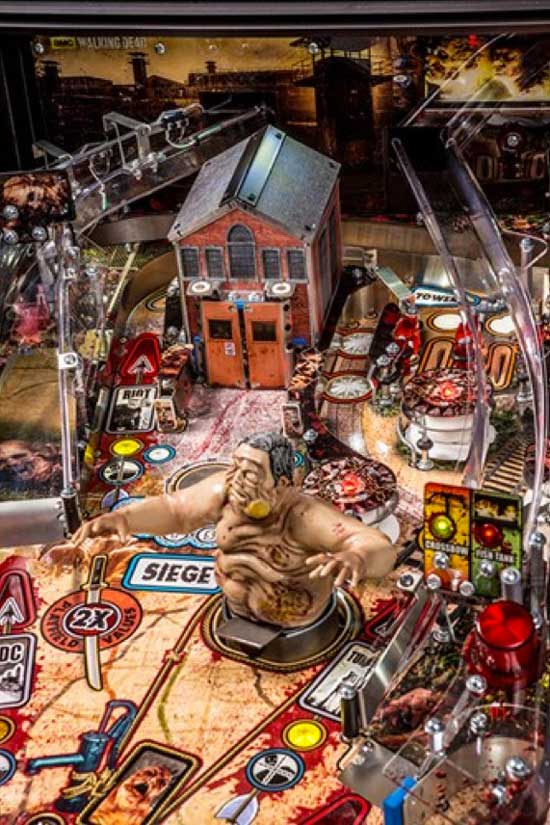
Total number of games produced
| Ranking |
Designer |
Number of Games Designed |
| 1 |
John Borg |
14 games
|
| 2 |
Steve Ritchie + Pat Lawlor |
8 games |
| 3 |
George Gomez |
6 games |
The 2000s and beyond gave rise to one of STERN Pinball’s main designers: John Borg. John Borg began his pinball designing career back in the 90s with Data East: A competitor company to Bally, Williams and Gottlieb. John Borg was responsible for a number of Data East’s best games, and he really refined his apparently simple, but incredibly challenging and complex playfields during his time with STERN with hits such as Metallica (2013), The Walking Dead (2014) and KISS (2015).
Steve Ritchie and Pat Lawlor have also contributed a good number of games. Steve Ritchie, in particular, has remained prominent in the eye of pinball players the world over for continuing to hook players in with his incredibly speedy and fluid playfield designs.
Who Produced the Most Player Favourites?
We all know that not every single thing any designer produces will be seen as their ‘best work’, so out of all the games, these designers produced, how many of them proved to be a hit with players?
The Pinside top 100 list collects over 72,000 pinball machine ratings from pinball players the world over to produce an up-to-date, comprehensive list of the world’s top 100 pinball machines. Every aspect of a pinball machine is accounted for: The music, the lighting, the display animations and of course the play field layout itself amongst countless other criteria.
Another comprehensive top pinball machine list is the IPDB. As well as including valuable information for some behind the scenes information (such as production numbers, who worked on what, year of release etc), IPDB features its own detailed list of top pinball machines.
This list includes games all the way up to the modern day, where yet more designers entered the fray in creating awesome games for players.
So, which designer was capable of producing the most hits? Surprisingly, many of the top designers by this criteria didn’t produce that many games throughout their careers! What games they did design though were all in the list, and were very well rated as well. So which designers contributed the most to the top 100 list**?
| John Borg |
Pat Lawlor |
Steve Ritchie |
Dennis Nordman |
George Gomez |
John Trudeau |
Barry Oursler |
John Popadiuk |
Mark Ritchie |
Brian Eddy |
| Metallica |
The Twilight Zone |
AC/DC |
Elvira and the Party Monsters |
Monster Bash |
Mustang |
Dr. Who |
World Cup Soccer |
Fish Tales |
The Shadow |
| TRON Legacy |
The Addams Family |
Star Trek: The Next Generation |
Scared Stiff: Featuring Elvira |
Lord of the Rings |
Congo |
Junk Yard |
Theatre of Magic |
Diner |
Attack from Mars |
| The Walking Dead |
Funhouse |
Star Trek (STERN) |
White Water |
Corvette |
Judge Dredd |
PIN*BOT |
Tales of the Arabian Nights |
Indiana Jones |
Medieval Madness |
| Iron Man |
No Good Gofers |
The Getaway: High Speed II |
Demolition Man |
Johnny Mnemonic |
Creature from the Black Lagoon |
Cyclone |
Cirqus Voltaire |
Taxi |
|
| Guns N' Roses |
Red and Ted's Roadshow |
Game of Thrones |
Indianapolis 500 |
Transformers |
Black Rose |
Whodunnit |
|
|
|
| X-Men |
Family Guy/Shrek |
Black Knight 2000 |
Pirates of the Caribbean |
Batman: The Dark Knight Trilogy |
The Machine: Bride of PIN*BOT |
Bram Stoker's Dracula |
|
|
|
| Tales from the Crypt |
Ripley's Believe it or Not! |
Terminator 2: Judgement Day |
Dr. Dude and his Excellent Ray |
|
|
|
|
|
|
| KISS (STERN) |
Banzai Run |
High Speed |
|
|
|
|
|
|
|
| Jurassic Park |
Earthshaker |
Firepower |
|
|
|
|
|
|
|
| Mary Shelley's Frankenstein |
Whirlwind |
Spider Man (STERN) |
|
|
|
|
|
|
|
| Star Wars |
Safe Cracker |
|
|
|
|
|
|
|
|
1: Pat Lawlor, John Borg: 11 games each
2: Steve Ritchie: 10 games
3: Dennis Nordman: 7 Games
4: George Gomez, John Trudeau, Barry Oursler: 6 games each
5: John Popadiuk, Mark Ritchie: 4 games each
6: Brian Eddy: 3 Games
But… Of those designers, which were the most consistent at producing hits?**:
1: Brian Eddy: 100% (3 out of 3 games in top 100)
2: John Popadiuk: 80% (4 out of 5 games in top 100)
3: Pat Lawlor: 62% (11 out of 18 games in top 100)
4: George Gomez: 55% (6 out of 11 games in top 100)
5: Dennis Nordman: 47% (6 out of 13 games in top 100)
6: John Borg: 44% (11 out of 25 games in top 100)
7: Steve Ritchie: 40% (9 out of 23 games in top 100)
8: Mark Ritchie: 37% (4 out of 11 games in top 100)
9: Barry Oursler: 18% (6 out of 33 games in top 100)
10: John Trudeau: 17% (6 out of 35 games in top 100)
As you can see from the results above, some designers certainly had a skill for creating games that kept the players coming back for more. Many of the games designed throughout Pat Lawlor’s and John Borg’s careers have become firm favourites, as have the games of Steve Ritchie.
What about consistency? The top scorers typically did not have many games between them, but many of these games are amongst some of the best-rated machines in the Pinside ratings. For example, two of the three Brian Eddy designed games are in the top five ranked games on Pinside, at number 1 and number 3 respectively. He must be doing something right! Whatever happened to Brian Eddy though?
After his time working at Midway, and designing games for Williams and Bally, Brian Eddy moved on from the pinball industry into Midway’s video gaming division following the closure of Williams and Bally. Brian Eddy is now the chief creative officer for Spooky Cool Games: A mobile game development studio originally founded by Williams programmer Larry Demarr.
Whilst Brian Eddy isn’t designing pinball machines anymore, we would have loved to have seen what else he had up his designing sleeves had he continued!
**Some games on the top 100 list are duplicates of one game (where Premium, Pro, and LE versions exist) For the sake of simplicity, games with multiple iterations are counted as a single machine)
Conclusion: Who is the Number One Designer of Solid State?
After all that data, what are we left with? Just who IS the greatest pinball designer of all time? Taking into account the success this designer has had from both sales numbers and what he has contributed to the top 100 list (Over 142,000 games shipped over 23 different games, with 10 of those in the top 100 lists), we conclude the greatest pinball designer is none other than…
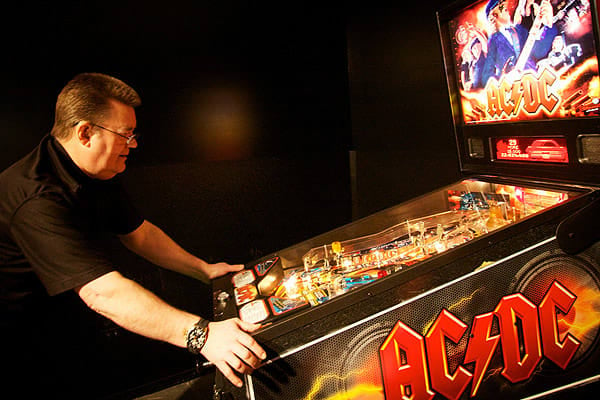
Steve Ritchie! Steve Ritchie has had a prolific influence over the entirety of his career. Even in his earliest days of designing during the 70s, Steve Ritchie was conceiving hits, which continued throughout the 80s, 90s and all the way through to the present day.
Several of Steve Ritchie’s games have taken up residence in Pinside’s as well as IPDB’s top 100 lists, and he has a lot of devoted fans to his fast and flowing gameplay style. As far back as the 90s, Steve Ritchie’s name alone was almost enough to sell a game. Even today when games are simply being teased, the games that seem to get the pinball enthusiasts talking the most are Steve Ritchie’s games. That’s a testament to how good the man’s machines are.
Whilst we’ve presented the numbers here, that won’t stop every player from having their own personal favourite designer and indeed game (that we will also be searching for in a future blog!); whether it’s the colourful and wacky worlds of John Popadiuk, the speed and adrenaline fuelled shots of Steve Ritchie or the well thought out objective based games of Brian Eddy. Play some games and see what kind of gameplay appeals to you the most.
Whatever you use to decide the ‘greatest’ pinball designer of all time, there are some designers who have certainly made big waves with what they brought to the industry. Steve Ritchie has a proven track record when it comes to producing games that not only sell very well, but also have lasting player appeal as is evident from the amount of his games in the top 100. In a similar way, Pat Lawlor’s innovations helped to give pinball its colossal rise to fame, and made pinball one of the most relevant forces in the arcade throughout the 90s. Equally, designers such as John Borg have recently been developing numerous hits that have been playing their part in keeping pinball alive even today.
We know everybody has their own favourites, so we asked some big names in the pinball world about their personal favourite designers. Here’s what they each had to say:
Craig Pullen: Competitive Pinball Player and UK Pinball Champion
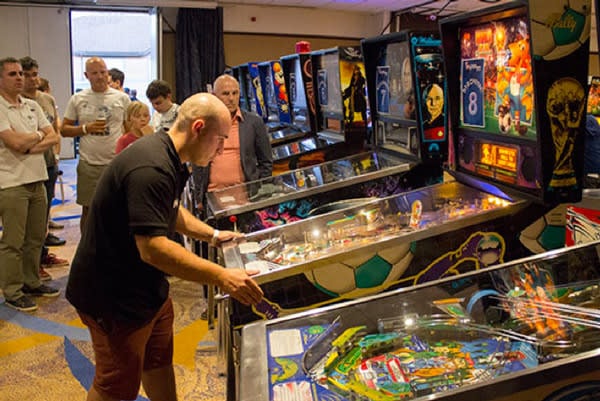
"I love all pinball, from all era's, so just deciding on one designer is not an easy task.
After giving it lots of consideration it came down to 2 designers, who are responsible for designing my top 2 favourite games of all time.
The first is legendary game designer, Pat Lawlor, famed for his 'stop and go' style of play which suits my 'controlled' style of play well. His playfield design on my favourite game 'Red and Ted's Roadshow' is just awesome, ticking all the boxes (flow, ramps, toys, depth).
The second is lesser known designer Claude Fernandez. Claude designed Flash Gordon and Skateball, 2 incredible Bally games from the early 80's with in-line drop targets and addictive gameplay.
After much deliberation I would have to give the title to Pat Lawlor, a true pinballing legend who has made so many of the world's best games."
Martin Ayub: Pinball News Editor

"My taste in games changes daily, or even hourly. One moment I might be looking for a little curious whimsy of the kind Pat Lawlor provides, while the next I might be ready for a furious fight to the death against a Steve Ritchie design. Other times, a different designer's creation might perfectly hit the spot, providing the challenge, entertainment, and above all FUN I'm looking for. And all that's never forgetting that every pinball design is the result of the whole design team's contributions. The designer may lead that team, but all the members make really significant contributions to the way the finished product looks, sounds and plays."
We also asked our own resident pin-heads here at Home Leisure Direct on who their favourites were:
Josh: HLD Outbound Sales Manager
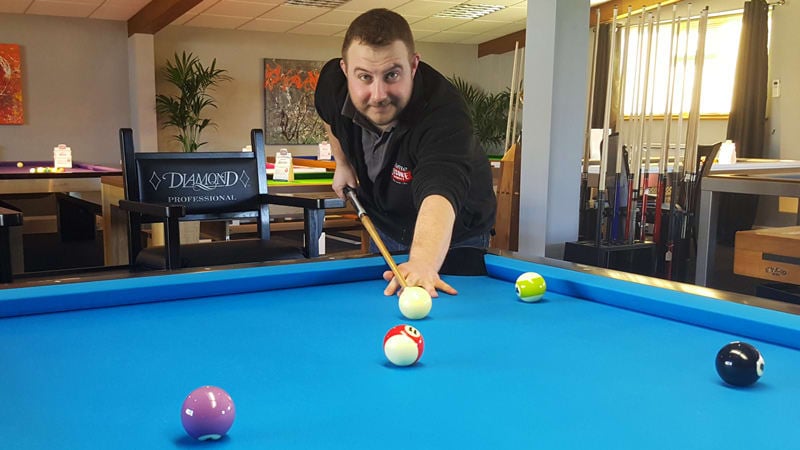
"A tough question with a very surprising outcome, it turns out that the big man Steve Richie's pins feature nowhere in my top 10. Even more so as I’m a big fan of speed and satisfying shots like the warp speed ramp in the latest Star Trek.
Along with speed, layered game rulesets are a big thing for me for longevity of a pin. Because of this Keith P Johnson and Joe Balcer get an honourable mention for the fantastic (and my personal favourite pin) The Simpsons Pinball Party, along with Dennis Nordman for White Water and John Borg for the massively underrated Metallica.
But for me the king of the pin is Brian Eddy for the classic Medieval Madness and Attack From Mars, along with unsung heroes like The Shadow."
Abi: HLD Marketing Manager
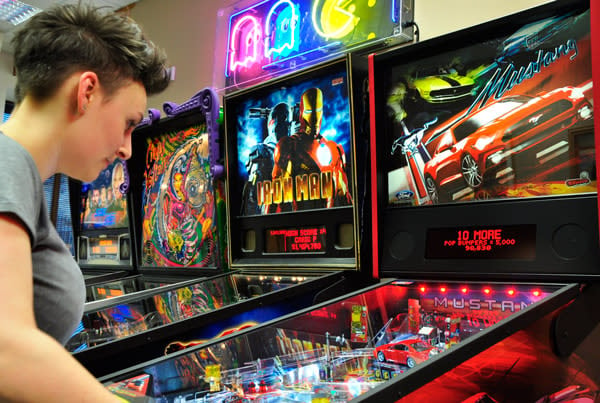
"This is such a difficult question! But from a range of about 4 or 5 of my favorite machines, Steve Ritchie is either the sole designer, or part of a team of designers who worked on the machine, so it’s going to have to be him.
I think I relate to his machines most because he creates a comprehensive game/level structure and a style of play that flows really well. When I’m playing pinball, I like a clear playfield so I can make shot after shot and really immerse myself in the game. I don’t like games that stop and start, I like fast, fluid, energetic games that really get the adrenaline going - and I never tire of a good third flipper!"
Jono: HLD Video Producer
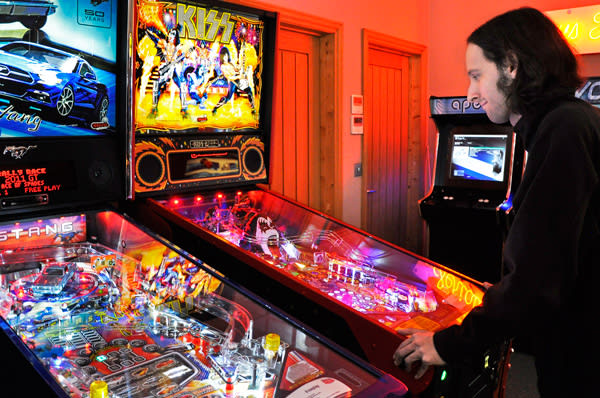
"As the author of this article, you'd expect me to know exactly who my favorite is, but it really hasn't been easy to pick!
Steve Ritchie came out on top in the write-up, and some of his designs have had me toiling in front of his machines for ages at a time trying to defeat the challenges he throws down. Generally though, it largely depends on what kind of mood I’m in. Despite this though, I have to say the first game designs I truly fell in love with were the designs of John Popadiuk. I grew up playing a lot of virtual pinball, where designs were truly out there, and the impossible was commonplace. In fact, the first time I saw Popadiuk’s games were in the virtual environment.
When I played them, my initial thoughts were: “A real machine shouldn’t be able to do this…”, but sure enough, the reality matched what the virtual world had shown me. It stunned me, simply put. The show stopping effects and eccentric artwork and layouts in JPop’s games were the first to truly wow me, and his games will always hold a special place because of that."
What about you? Which designer do you think creates your perfect game of pinball? Do any of our results surprise you? We’d love to hear what you think in the comments below!
Big thanks to Pinside and the IPDB for proving to be such valuable data sources, and Martin Ayub and Craig Pullen for their own input and thoughts!
Article written by Jono: HLD Video Producer